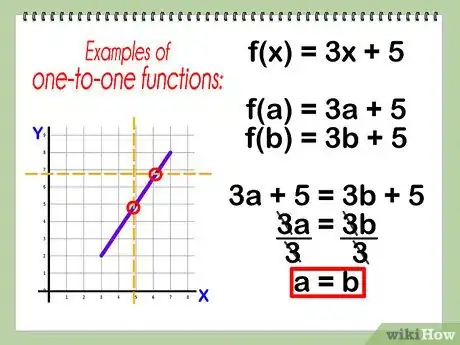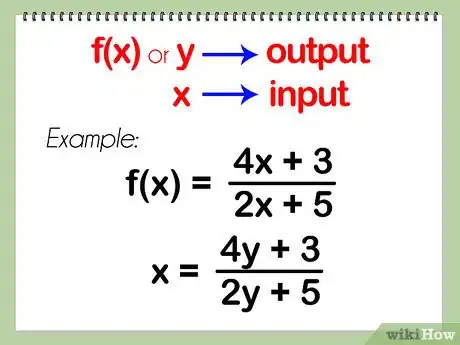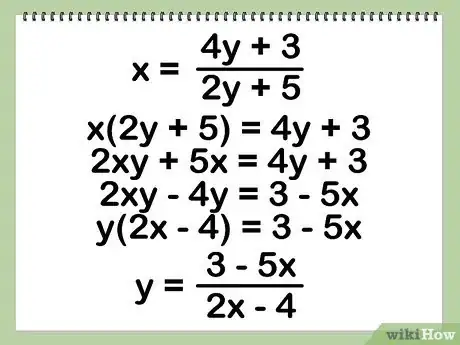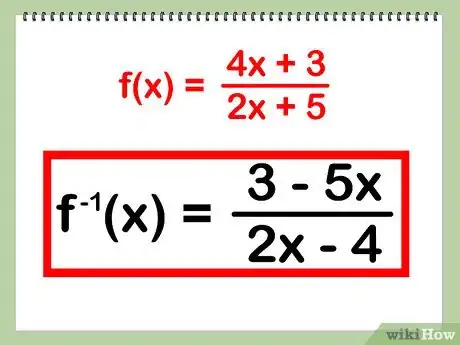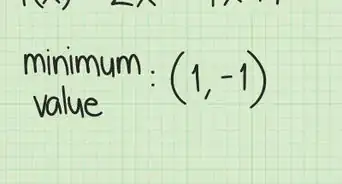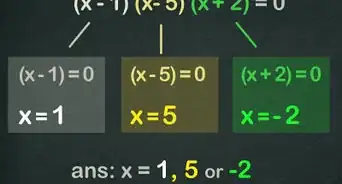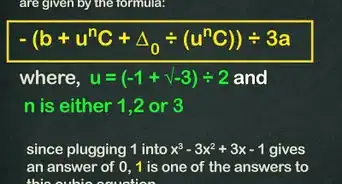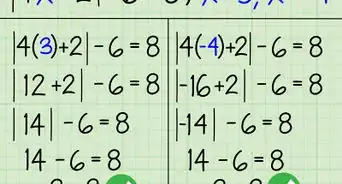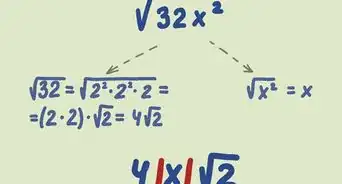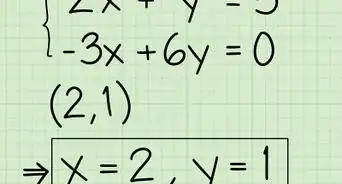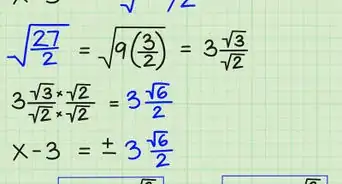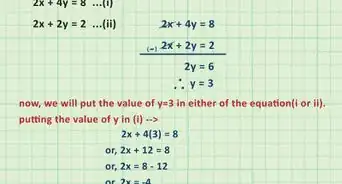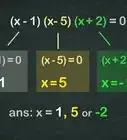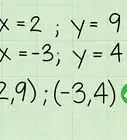wikiHow is a “wiki,” similar to Wikipedia, which means that many of our articles are co-written by multiple authors. To create this article, volunteer authors worked to edit and improve it over time.
This article has been viewed 127,041 times.
Learn more...
A foundational part of learning algebra is learning how to find the inverse of a function, or f(x). The inverse of a function is denoted by f^-1(x), and it's visually represented as the original function reflected over the line y=x. This article will show you how to find the inverse of a function.
Steps
-
1Make sure your function is one-to-one. Only one-to-one functions have inverses.[1]
- A function is one-to-one if it passes the vertical line test and the horizontal line test. Draw a vertical line through the entire graph of the function and count the number of times that the line hits the function. Then draw a horizontal line through the entire graph of the function and count the number of times this line hits the function. If each line only hits the function once, the function is one-to-one.
- If a graph does not pass the vertical line test, it is not a function.
- To algebraically determine whether the function is one-to-one, plug in f(a) and f(b) into your function and see whether a = b. As an example, let's take f(x) = 3x+5.
- f(a) = 3a + 5; f(b) = 3b + 5
- 3a + 5 = 3b + 5
- 3a = 3b
- a = b
- Thus, f(x) is one-to-one.
- A function is one-to-one if it passes the vertical line test and the horizontal line test. Draw a vertical line through the entire graph of the function and count the number of times that the line hits the function. Then draw a horizontal line through the entire graph of the function and count the number of times this line hits the function. If each line only hits the function once, the function is one-to-one.
-
2Given a function, switch the x's and the y's. Remember that f(x) is a substitute for "y."[2]
- In a function, "f(x)" or "y" represents the output and "x" represents the input. To find the inverse of a function, you switch the inputs and the outputs.
- Example: Let's take f(x) = (4x+3)/(2x+5) -- which is one-to-one. Switching the x's and y's, we get x = (4y + 3)/(2y + 5).
Advertisement -
3Solve for the new "y." You'll need to manipulate the expressions to solve for y, or to find the new operations that must be performed on the input to obtain the inverse as an output.[3]
- This can be tricky depending on your expression. You may need to use algebraic tricks like cross-multiplication or factoring to evaluate the expression and simplify it.
- In our example, we'll take the following steps to isolate y:
- We're starting with x = (4y + 3)/(2y + 5)
- x(2y + 5) = 4y + 3 -- Multiply both sides by (2y + 5)
- 2xy + 5x = 4y + 3 -- Distribute the x's
- 2xy - 4y = 3 - 5x -- Get all the y terms on one side
- y(2x - 4) = 3 - 5x -- Reverse distribute to consolidate the y terms
- y = (3 - 5x)/(2x - 4) -- Divide to get your answer
-
4Replace the new "y" with f^-1(x). This is the equation for the inverse of your original function.[4]
- Our final answer is f^-1(x) = (3 - 5x)/(2x - 4). This is the inverse of f(x) = (4x+3)/(2x+5).
Community Q&A
-
QuestionWhere did the +5 in the determining whether the function is one-to-one go?
 Cluster DuckCommunity AnswerThe 5's cancel each other out during the process. Here is the extended working out. 3a + 5 = 3b + 5, 3a +5 -5 = 3b, 3a = 3b.
Cluster DuckCommunity AnswerThe 5's cancel each other out during the process. Here is the extended working out. 3a + 5 = 3b + 5, 3a +5 -5 = 3b, 3a = 3b.
References
- ↑ https://math.libretexts.org/Courses/Monroe_Community_College/MTH_165_College_Algebra_MTH_175_Precalculus/02%3A_Functions_and_Their_Graphs/2.05%3A_One-to-One_and_Inverse_Functions
- ↑ https://www.coolmath.com/algebra/16-inverse-functions/05-how-to-find-the-inverse-of-a-function-01
- ↑ https://www.purplemath.com/modules/invrsfcn3.htm
- ↑ https://math.libretexts.org/Courses/Monroe_Community_College/MTH_165_College_Algebra_MTH_175_Precalculus/02%3A_Functions_and_Their_Graphs/2.05%3A_One-to-One_and_Inverse_Functions
About This Article
To find the inverse of a function, start by switching the x's and y's. Then, simply solve the equation for the new y. For example, if you started with the function f(x) = (4x+3)/(2x+5), first you'd switch the x's and y's and get x = (4y+3)/(2y+5). Then, you'd solve for y and get (3-5x)/(2x-4), which is the inverse of the function. To learn how to determine if a function even has an inverse, read on!
